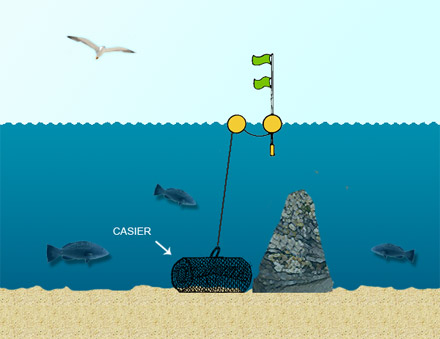Potting
Fishing technique
An important skill when pots fishing is to be knowledgeable about the fishing spots, the seabed, the current and the tide coefficient.
Depending on the type of fishing required, traps of different shapes and weights are used, with appropriate baits (e.g. lobster and shrimp traps).
Pots are baited prior to being dropped. Traps can be shot individually or by series. They rest on the seabed with buoys attached at either end to enable them to be located by the fisherman.
The pots are left in the sea for several hours (in general overnight) before the hauling process begins. Hauling can be done manually or with a pots hauler which reduces the physical efforts of the fisherman.
Suggestion
We recommend our electric pots hauler 930, the electric pots hauler Brutus and the manual capstan 931.

Glossary
- Bait
fish placed in a trap to attract fish, seafood or shellfish, etc. - Pot (or trap or creel) :
sturdy or collapsable trap made out of a weighted frame covered with plastic-coated or galvanised wire with nylon netting. It has narrow hole to allow the entrance of the catch. - Spinning:
action of wetting the traps. - Pots hauler:
equipment fixed on the bulkhead of the boat and used for hauling pots. - Anchor:
to immerse a weighted crate on the seabed. - Nasse:
see Locker - Orin:
A rope, often made of cordage, on which traps are moored. - Turning:
action of pulling up the crates. - .
.
.
